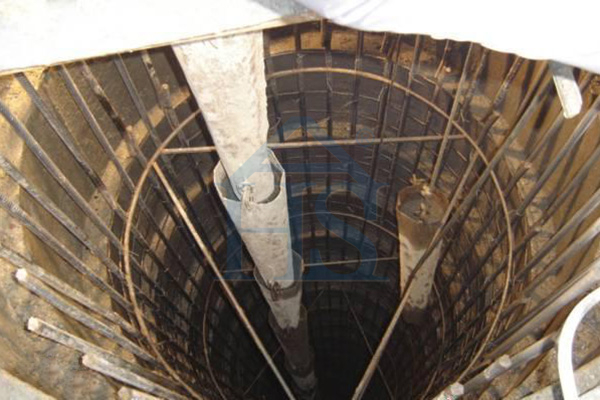Silika dumanı ve cüruf tozunun her ikisi de ek çimentolu malzemeler (SCM'ler) inşaat sektöründe betonun özelliklerini ve performansını iyileştirmek için kullanılır. Bazı benzerlikleri paylaşsalar da, benzersiz özelliklere ve farklı uygulamalara sahiptirler. Buraya, silis dumanı ve cüruf tozu arasındaki temel farkları tartışacağız.
Bileşimi ve Kökeni
silika dumanı: silika dumanı, mikrosilika olarak da bilinir, elektrik ark ocaklarında silikon veya ferrosilikon alaşımlarının üretiminin bir yan ürünüdür. Çok iyi oluşur, amorf (kristal olmayan) silika parçacıkları, yüksek silikon dioksit içeren (SiO2) etrafındaki içerik 85-96%.
Cüruf Tozu: Cüruf tozu, daha önce de belirtildiği gibi, demir yapımı ve çelik yapımı süreçlerinin bir yan ürünüdür. Çeşitli mineral ve bileşiklerden oluşur., işlenen cevherin türüne ve kullanılan üretim yöntemlerine bağlı olarak özel bileşimi ile. Cüruf tozunun ana bileşenleri kalsiyum içerir, alüminyum, ve silikon oksitler.
Fiziki ozellikleri
silika dumanı: Silika dumanı parçacıkları son derece incedir, arasında değişen parçacık boyutlarına sahip 100 ile 150 çimento parçacıklarından kat kat daha küçük. Bu yüksek incelik, puzolanik reaktivitesine katkıda bulunur., suyun varlığında kalsiyum hidroksit ile reaksiyona girme yeteneğidir, ilave çimentolu bileşikler oluşturmak.
Cüruf Tozu: Cüruf tozu, silis dumanına kıyasla daha iri parçacık boyutuna sahiptir, yine de çoğu çimento parçacığından daha ince olmasına rağmen. İnceliği, SCM olarak kullanıldığında reaktivitesini ve su talebini etkiler..
Reaktivite ve Mekanizma
silika dumanı: Silis dumanı betonda puzolanik malzeme görevi görür, yani çimento hidratasyonu sırasında üretilen kalsiyum hidroksit ile kimyasal olarak reaksiyona girerek ilave çimentolu bileşikler oluşturur, kalsiyum silikat hidrat gibi (CSH). Bu reaksiyon betonun mukavemetine ve dayanıklılığına katkıda bulunur..
Cüruf Tozu: Cüruf tozu, özellikle öğütülmüş granül yüksek fırın cürufu (GGBFS), hem puzolanik hem de gizli hidrolik özellikler sergiler. Kalsiyum hidroksit ile reaksiyona girer, silika dumanına benzer, fakat aynı zamanda çimentolu bileşikler oluşturmak üzere doğrudan suyla reaksiyona girme yeteneğine de sahiptir.. Bu ikili mekanizma, betonun uzun vadeli mukavemet gelişiminin iyileştirilmesine yardımcı olur.
Uygulamalar
silika dumanı: Silika dumanı öncelikle üretmek için kullanılır yüksek performanslı betone (HPC) ve ultra yüksek performanslı beton (UHPC), eklenmesinin gücü önemli ölçüde artırabildiği yer, dayanıklılık, ve betonun genel performansı. Refrakter malzemelerde de kullanılır, petrol kuyusu çimentolama, ve gelişmiş kompozit malzemeler.
Cüruf Tozu: Cüruf tozu çeşitli uygulamalarda kullanılır, SCM olarak beton üretimi dahil, toprak stabilizasyonu, tarım, ve atık yönetimi. Beton içinde, Portland çimentosunun bir kısmının yerini alabilir, CO2 emisyonlarını azaltmak ve beton üretiminin genel maliyetini düşürmek.
Çevresel Etki
silika dumanı: SCM olarak silis dumanının kullanılması Portland çimentosuna olan talebin azaltılmasına yardımcı olur, küresel CO2 emisyonlarının önemli bir kısmından sorumlu olan. Yine de, üretim süreci enerji yoğundur, ve bulunabilirliği cüruf tozuyla karşılaştırıldığında sınırlıdır.
Cüruf Tozu: Cüruf tozu, demir ve çelik üretiminin bir yan ürünü olarak yaygın olarak bulunabilmesi nedeniyle daha önemli çevresel faydalar sunmaktadır.. Betonda kullanımı CO2 emisyonlarını önemli ölçüde azaltabilir, doğal kaynakları korumak, ve atık yönetimi çabalarına katkıda bulunmak.
Sonuç olarak, silika dumanı ve cüruf tozunun her ikisi de inşaat sektöründe SCM olarak kullanılırken, kompozisyon açısından belirgin farklılıklara sahiptirler, köken, fiziki ozellikleri, tepkime, uygulamalar, ve çevresel etki. Silika dumanı, yüksek puzolanik reaktivitesi ve ince parçacık boyutu nedeniyle öncelikle yüksek performanslı beton uygulamalarında kullanılır.. Tersine, cüruf tozu daha yaygın olarak bulunur ve çok yönlüdür, Beton üretiminden toprak stabilizasyonuna ve tarıma kadar çeşitli uygulamalarla.
Understanding these differences is essential when choosing the appropriate SCM for a specific application, as it will influence the concrete’s performance, cost, and environmental footprint. By selecting the right material for the job, engineers and construction professionals can optimize the benefits of these supplementary cementitious materials and contribute to a more sustainable built environment.





